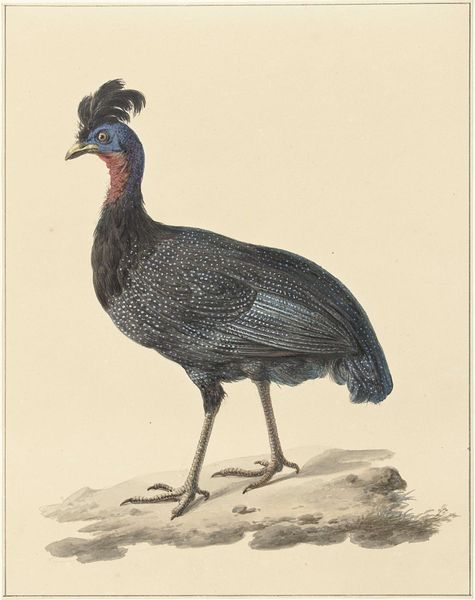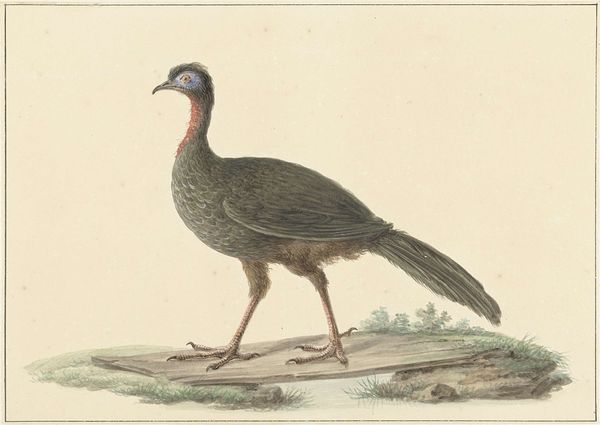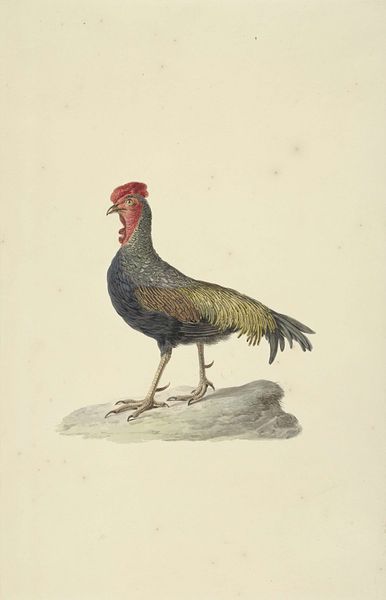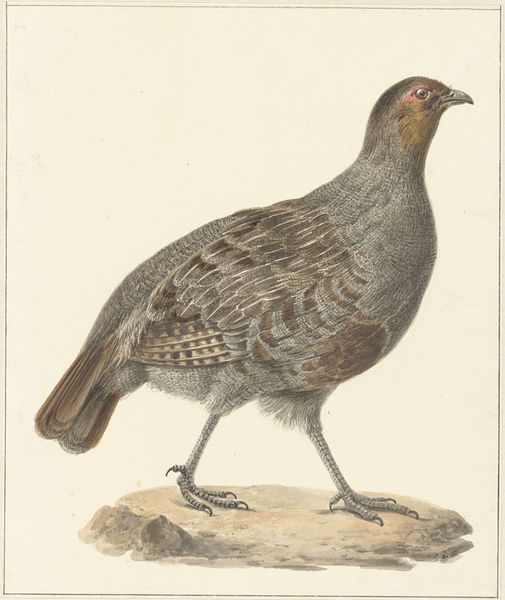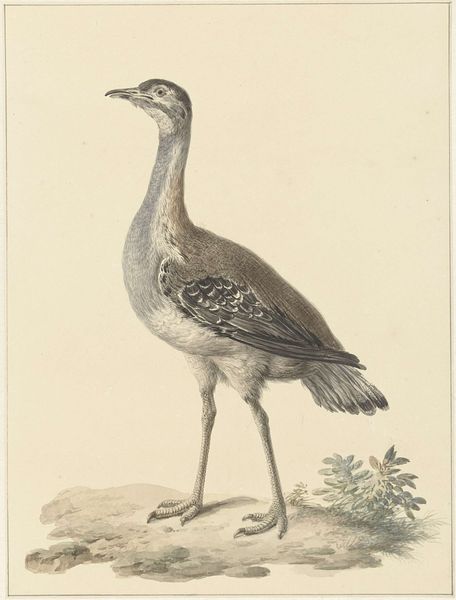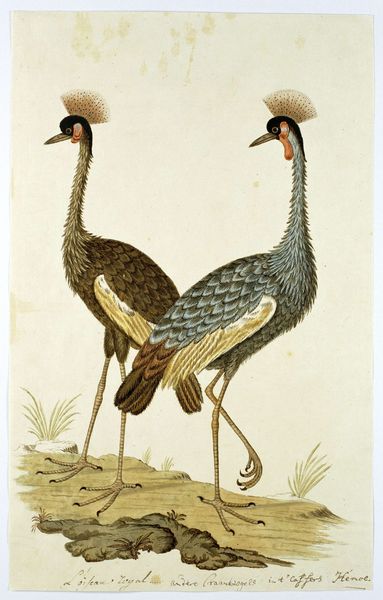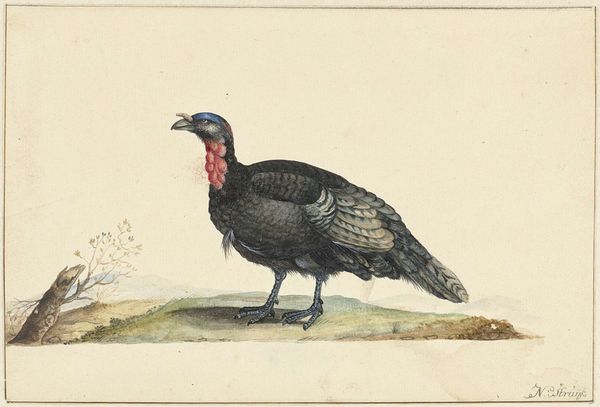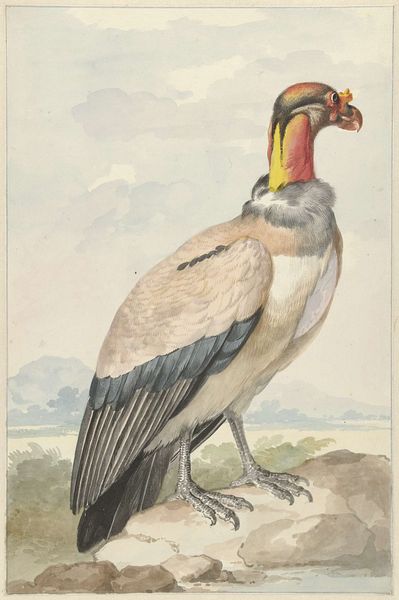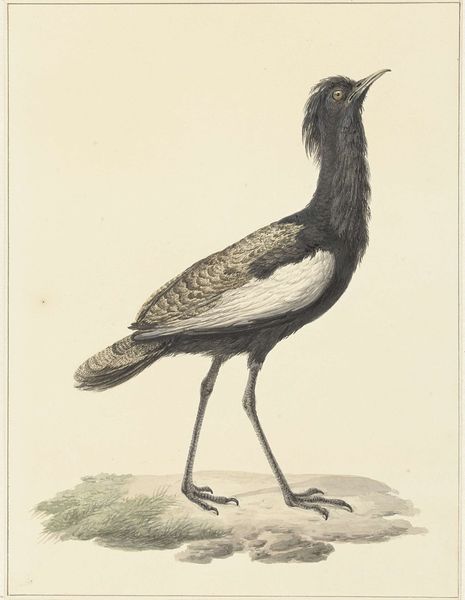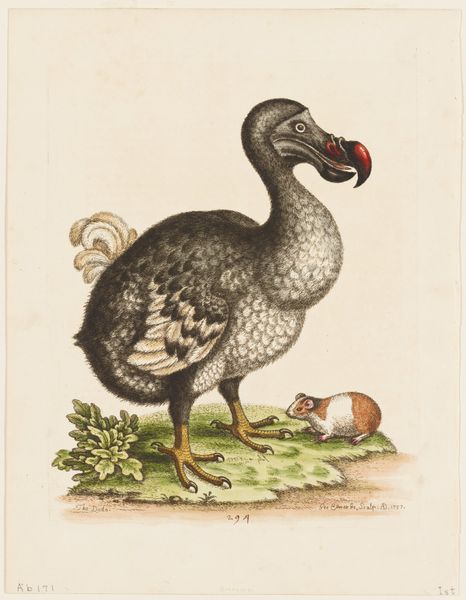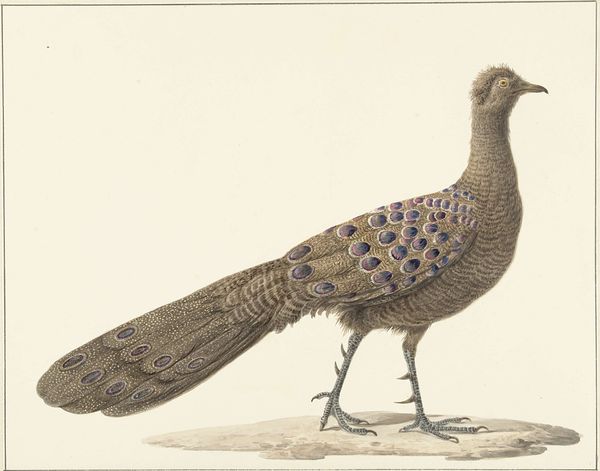
drawing, watercolor
#
portrait
#
drawing
#
botanical illustration
#
watercolor
#
botanical drawing
#
watercolour illustration
#
botanical art
#
watercolor
#
realism
Dimensions: height 278 mm, width 231 mm
Copyright: Rijks Museum: Open Domain
Curator: Alright, next up, we have "Helmparelhoen" by Pieter Pietersz. Barbiers. He worked on this between 1759 and 1842 using watercolor. It's a rather stately portrait of a helmeted guineafowl. Editor: What a wonderfully peculiar bird! It stands there so serenely, almost as if posing for its portrait. There’s something regal, yet also faintly comical, about its demeanor. Curator: Absolutely, Pieter Barbiers has rendered it with a certain botanical precision. Look at the details of its plumage, how each feather is carefully delineated in these subdued shades. He's really nailed realism here, almost as if he wants us to catalog it! Editor: The bird stands so proudly with an undeniable, almost awkward grace. But tell me, the setting is minimal, isn’t it? It's perched on a muted bit of nondescript foliage. What do you think this starkness brings to the overall image? Curator: That’s a smart observation. I feel this very starkness almost isolates the bird for our scrutiny. There aren't many distractions from its form, allowing the viewer to closely examine and admire its anatomy, color variations, and unusual head structure. The intention here is almost scientific in its thoroughness. Editor: I think you are right! By stripping away a detailed background, Barbiers turns this fowl into something of an emblem or symbol. What might the helmet signify here? Perhaps a certain stoicism or nobility from an old fairytale? Maybe I’m just being whimsical, but those slightly protruding and spiky feathers behind its beak gives off this sense of armor and resilience. Curator: That is not far off, in my view. Think about Dutch Golden Age naturalism...birds, and specifically fowl, were seen as signs of wealth and social standing. I mean, look at the feathery details and lifelike posture. The bird is clearly special and commands our respect and curiosity. Editor: Seeing through that lens, this suddenly speaks volumes about the culture from whence it came. Thanks for sharing this new view, it gives much more than just another botanical painting, it offers a real peek into its time. Curator: You are welcome! In its quiet way, it reflects its historical period back at us.
Comments
No comments
Be the first to comment and join the conversation on the ultimate creative platform.
